Engineers
These are our engineers' profiles.
Regarding business and research achievements, we include not only our company's results but also each individual's past results.
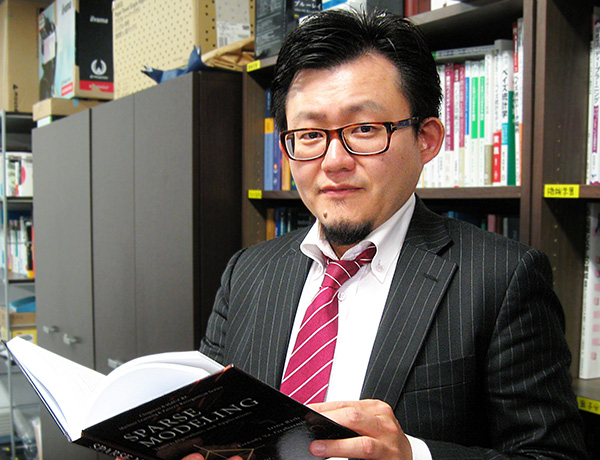
- Introduction
- I am studying everyday mathematical theories and system programming skills to produce state-of-the-art practical technologies based on intelligent computing. I wish to establish a company where many researchers produce unique products to their heart's content.
- [Expertise]
-
- Statistical Analysis
- Time Series Analysis
- Signal Processing
- Sound Processing
- [Skill]
-
- C/C++
- Java
- C#
- Python
- PHP
- MATLAB
- [Academic Background]
- University of Tokyo
- [Business Results]
-
- Independent Component Analysis, technological survey and tutorial.
- Bayesian Network, technological survey.
- Change Point Detection of Time Series, technological survey.
- Periodic Impulse Waveform Extraction, technological survey and implementation.
- Text-To-Speech Synthesis Program, porting from Scheme/C++ to lightweight C.
- Tone Representation and Resynthesis System for Speech and Sound, R&D.
- Statistical Analysis and Signal Processing Tools by MATLAB, development.
- Anomaly Detection by Mechanical Vibration, algorithm R&D.
- Noise Reduction Algorithm by Wavelet Analysis, R&D.
- Optical Diagnostics System for Substrate, algorithm R&D.
- Optimized Numerical Control for Semiconductor Production Device, software R&D.
- Human Multi-Sensor Simultaneous Measurement and Management System, development.
- Zigbee Wireless Sensor Network Monitoring System, development.
- Medical and Aircraft Safety Analysis System, performance tuning research.
- Web Guidance System using Ontology, development.
- 3DCG Displaying System using Natural Language Processing, development.
- Rule-based Social Experiment System, development.
- Intelligent Robots, Five Sense Engineering, Experience Media, technology report.
- Complex Problem Guidance System using Data Mining, R&D
- Network Security Auto Verification System, development.
- Discourse Video and Audio Analysis System, development.
- Recent Statistical Modeling Algorithm Survey, technology report and tutorial.
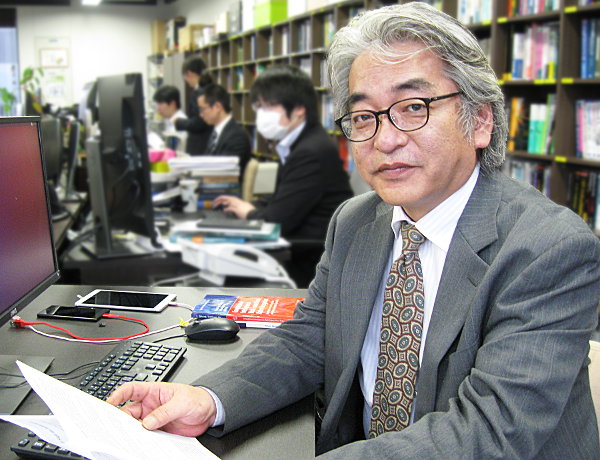
- Introduction
- I have a large experience in signal processing. Especially, it is my forte to extract information buried in noise or other signals using extensive techniques.
- [Expertise]
-
- Signal Filtering
- Clustering Analysis
- Multivariate Analysis
- Frequency Analysis
- Simulations
- Information Analysis for Neurophysiology
- [Skill]
-
- C
- Fortran
- LabVIEW
- Visual Basic
- C#
- [Degree]
- Doctor of Engineering (University of Tokyo)
- [Participating Academic Societies]
- [Research Fields]
-
- Olfactory Information Processing in Invertebrate CNS.
- Development of Multi-Function Probe for Intracellular Recording.
- High Speed Optical Recording of Membrane Potential in Olfactory.
- [Papers]
-
- Perez Goodwyn P, Katsumata-Wada A, Okada K: Morphology and neurophysiology of tarsal vibration receptors in the water strider Aquarius paludum (Heteroptera: Gerridae), J. Insect Physiol. 55(2009), pp. 855-861
- Okada K, Sakuma M: An odor stimulator controlling odor-temporal pattern applicable in insect olfaction study Chem. Senses. 34(2009), pp. 425-433
- Masaki Shuzo, Koutaroh Okada, Ryohei Kanzaki, Isao Shimoyama: Fluorescence Detection System Using a Metal-coated Glass Micropipette, The 20th IEEE International Conference on Micro Electro Mechanical Systems (MEMS '07),(2007,Jan.), pp. 207-210.
- Masaki Shuzo, Koutaroh Okada, Hidekazu Arai, Ryohei Kanzaki, Isao Shimoyama: High Resolution and S/N Ratio Nano Probing System, The 19th International Conference on Micro Electro Mechanical Systems (MEMS '06), (2006, Jan.), pp. 550-553.
- Masaki Shuzo, Tomoki Kazawa, Koutaroh Okada, Ryohei Kanzaki, Isao Shimoyama: Intracellular Recording and Calcium Measurement in a Single Neuron of Aplysia Using a Nano-Probe, The 10th International Conference on Miniaturized Systems for Chemistry and Life Sciences (μTAS2006),(2006, Nov.), pp. 1402-1404.
- Hill ES, Okada K, Kanzaki R: Visualization of modulatory effects of serotonin in the silkmoth antennal lobe. J. Exp. Biol 206(2003), pp. 345-352.
- Okada K, Kanzaki R: Localization of odor-induced oscillations in the bumblebee antennal lobe, Neurosci. lett. 136, (2001), pp. 133-136.
- Ai H, Okada K, Hill ES, and Kanzaki R: Spatio-temporal activities in the antennal lobe analyzed by an optical recording method in the male silkworm moth Bombyx mori, Neurosci. lett. 258 (1998) , pp. 135-138
- Okada K, Kanzaki R and Kawachi K: High-speed voltage-sensitive dye imaging of an in vivo insect brain, Neurosci. Lett. 209 (1996), pp. 197-200
- Okada K, Kanzaki R and Kawachi K: (1995) Optical recording with voltage-sensitive dye in an insect brain. In "Nervous Systems and Behavior" (Eds. Burrows, Matheson, Newland and Schuppe). Proceedings of the 4th International Congress of Neuroethology, Georg Thieme Verlag Stutgart, New York, pp. 390

- Introduction
- I am specialized in developmental biology and numerical simulation. I can easily communicate with experimental biologists who don't have computational background. I am studying technologies not only in biology but also in other fields now.
- [Expertise]
-
- Simulations
- Image Analysis
- Algorithm Parallelization
- Bioinformatics
- [Skill]
-
- Java
- C#
- C/C++
- VB.NET
- Objective-C
- OpenMP
- MPI
- Windows/MacOS/Linux
- [Academic Background]
- Nagoya University
Master of Science (Biology) - [Research and Business Results]
-
- Theoretical studies on animal morphogenesis
- multiplatforming and algorithm parallelization of in-cell simulators
- Research and development of 3D image analysis algorithms
- Development of data analysis system for bioinformatics
- [Papers]
-
- Horikawa K, Ishimatsu K, Yoshimoto E, Kondo S, Takeda H. Noise-resistant and synchronized oscillation of the segmentation clock. Nature. 2006 Jun 8;441(7094):719-23.
- Yamaguchi M, Yoshimoto E, Kondo S. Pattern regulation in the stripe of zebrafish suggests an underlying dynamic and autonomous mechanism. Proc Natl Acad Sci U S A. 2007 Mar 20;104(12):4790-3.
- Yoshimoto E, Kondo S. Wing vein patterns of the Hemiptera insect Orosanga japonicus differ among individuals. Interface Focus. 2012 August 6; 2(4):451-456;
- Eiichi Yoshimoto, Shigeru Kondo. Wing vein patterns of Orosanga japonicus is Turing wave. The 76th Conference of the Zoological Society of Japan (2005 Tsukuba)
- Eiichi Yoshimoto, Shigeru Kondo Mathematical modeling of animal morphogenesis; pattern formation on the cell-based growing field Society for Mathematical Biology Conference (2008 Toronto)
- Eiichi Yoshimoto, Shigeru Kondo. Pattern formation in animals by Turing waves - Vertebrate skin patterns and insect wing vein patterns. The 11th Conference of the Society of Evolutionary Studies of Japan (2009 Sapporo)
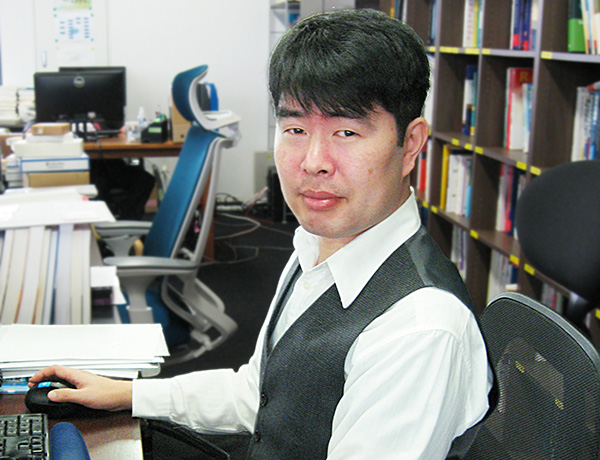
- Introduction
- An experienced engineer in experiments and observations of behavioral ecology. Especially, I have been researching the mating behavior of water striders. I want to support your research in each stages with software from experiment planning to data acquisition and analysis. Currently, I am studying image processing, because I am interested in software recognition of animal behavior.
- [Expertise]
-
- Behavioral Ecology
- Simulations
- [Skill]
-
- C/C++
- Java
- Visual Basic
- C#
- PHP
- JavaScript
- R
- Swift
- [Degree]
- Ph.D. (Agricultural Sciences, Kyoto University)
- [Participating Academic Societies]
- [Papers and Presentations]
-
- Matsueda A., Fujisaki K. Influence of male density on guarding behaviour in the water strider Aquarius paludum (Heteroptera: Gerridae) Eur. J. Entomol. 2011, 108(4): 597-601
- Matsueda A., Oosaki N. (2001) Operational sex ratio and mating strategy in Gerris insularis. The 45th annual meeting of Applied Entomology and Zoology, Shimane Univ.
- Matsueda A., Fujisaki K. (2006) Influence of experience of male water strider in guarding behavior. The 50th annual meeting of Applied Entomology and Zoology, Tsukuba Univ.
- Matsueda A., Fujisaki K. (2007) Intra-guild predation of Aquarius paludum on A. elongatus in nymphal period. The 51st annual meeting of Applied Entomology and Zoology, Hiroshima Univ.
- Matsueda A., Fujisaki K. (2009) Why water strider males do not dismount voluntarily after copulation? The 53rd annual meeting of Applied Entomology and Zoology, Hokkaido Univ.
- Matsueda A., Fujisaki K. (2011) Behavoral study in sex ratio recognition of male of water strider. The 55th annual meeting of Applied Entomology and Zoology, Kyushu Univ.
- Matsueda A., Fujisaki K. (2012) Cue of guarding behavior decision of water strider (Aquarius paludum) males. The 56th annual meeting of Applied Entomology and Zoology, Kinki Univ.
- Nakajima Y., Matsueda A., (2011) Fujisaki K. Predation pressure producing intraspecific variation in egg mass size and its working mechanism. The 27th annual meeting of The Society of Population Ecology, Okayama Univ.

- Introduction
- I am an engineer having experience in neurophysiological research and the development of programs related to measurement systems and time series analysis. I am developing software which well fit the purpose of individual experiments and analysis by taking advantage of my research experiences. I am also trying to implement algorithms, which requires scientific expertise based on research articles.
- [Expertise]
-
- Time Series Analysis
- Signal Processing
- Time-Frequency Analysis
- Data Analysis and Image Processing for Neuroscience Research
- [Skill]
- [Degree]
- Ph.D. (neuroscience field) at Osaka University
- [Participating Academic Societies]
- [Research Results]
-
- Information processing in the mammalian neocortex.
- Development of software systems for recording electrical signals of single neurons.
- Construction of two-photon microscope system in combination with the electrophysiological recording system.
- [Papers]
-
- Valery Grinevich, Alexander Kolleker, Marina Eliava, Naoki Takada, Hiroshi Takuma, Yugo Fukazawa, Ryuichi Shigemoto, Dietmar Kuhl, Jack Waters, Peter H. Seeburg, Pavel Osten (2009) Fluorescent Arc/Arg3.1 indicator mice: a versatile tool to study brain activity changes in vitro and in vivo. Journal of Neuroscience Methods 184:25-36.
- Ming Ren, Yumiko Yoshimura, Naoki Takada, Shoko Horibe, Yukio Komatsu (2007) Specialized inhibitory synaptic actions between nearby neocortical pyramidal neurons. Science 316(5825):758-61.
- Naoki Takada, Yuchio Yanagawa, Yukio Komatsu (2005) Activity-dependent maturation of excitatory synaptic connections in solitary neuron cultures of mouse neocortex. European Journal of Neuroscience 21:422-430.
- Naoki Takada (2001) Effects of chronic exposure of brain-derived neurotrophic factor on synaptic responses of solitary neurons cultured from rat visual cortex. Osaka University Medical Journal 52:293-299.
- Nobuaki Taniguchi, Naoki Takada, Eiji Kumura, Fumitaka Kimura, Tadaharu Tsumoto (2000) Actions of BDNF on evoked and spontaneous EPSCs dissociate with maturation of neurones cultured from rat visual cortex. Journal of Physiology 527:579-592.
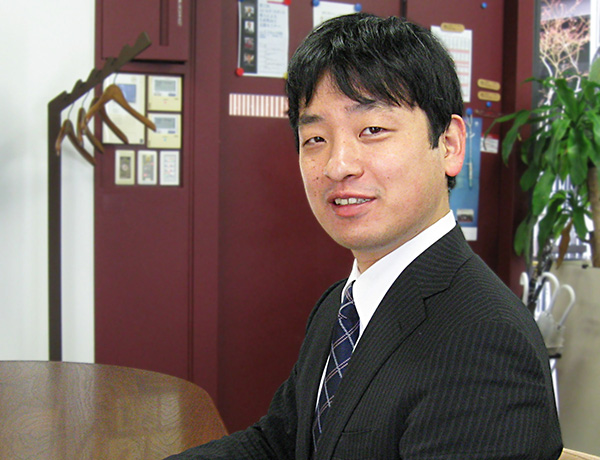
- Introduction
- I'm trying to develop software which is helpful, unique and amusing, taking advantage of my knowledge and experience in physics and engineering.
- [Expertise]
-
- Computational Physics
- Combinatorial Optimization
- [Skill]
-
- C/C++
- C#
- Fortran
- Octave
- [Degree]
- Kyoto University, Graduate School of Energy Science, Master
- [Research Results]
-
- Research of surface plasmon polariton on semiconductor with ultrafast pulse high intensity laser
- Fabrication of nanoporous iron catalysis
- [Business Results]
-
- Derivation of the analytic solution for inverse kinematics calculation of a redundant robotic arm, development
- Solver for the vehicle routing problem by meta-heuristic methods, development
- A robot simulator with physics engine, development
- A diamond sensory evaluation program using optical data, development
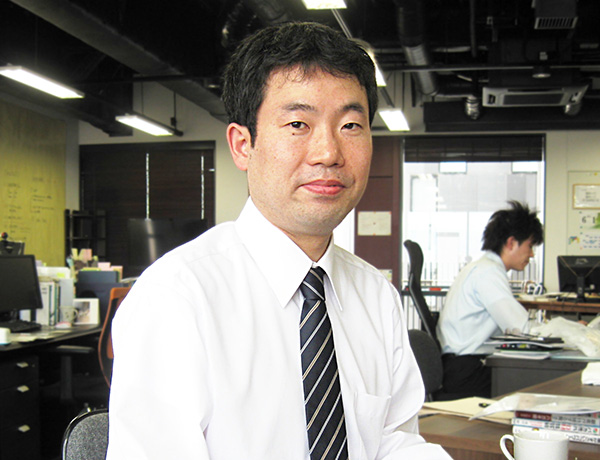
- Introduction
- In the field of computational biophysics, I have studied to elucidate structure-function relationships of proteins, by calculating the free energy or the flow of physical properties such as energy and linear momentum in proteins from molecular dynamics results.
I aim to develop software to effectively analyze mechanisms of action in biological systems, by leveraging my experience.
- [Expertise]
-
- Molecular Simulation
- Time Series Analysis
- Multivariate Analysis
- Mathmatical Optimization
- [Skill]
-
- Python
- Fortran
- C/C++
- C#
- MATLAB
- Swift
- [Degree]
- Ph. D. (Science), Nagoya University
- [Research Fields and Results]
-
- Study of photoisomerized reaction dynamics on photoreceptive proteins
- Development of a novel drug discovery software
- Study of ligand-protein interactions by binding free energy calculation
- Development of the CURP program that calculates and analyzes the flow of physical properties in proteins
- Atomic stress tensor analysis of proteins using the CURP program
- Applied the energy flow analysis method to the G-protein coupled receptors
- [Papers and Presentations]
-
- Takakazu Ishikura, Yuki Iwata, Tatsuro Hatano, Takahisa Yamato, Energy exchange network of inter-residue interactions within a thermally fluctuating protein molecule: A computational study, Journal of Computational Chemistry, (2015) 36, 1709-1718
- Kazuhiro Takemura, Raghunadha Reddy Burri, Takeshi Ishikawa, Takakazu Ishikura, Shun Sakuraba, Nobuyuki Matubayasi, Kazuo Kuwata and Akio Kitao, Free-energy analysis of lysozyme-triNAG binding modes with all-atom molecular dynamics simulation combined with the solution theory in the energy representation, Chemical Physics Letters (2013), 559, 94-98
- Takakazu Ishikura, Tatsurou Hatano, and Takahisa Yamato, Computational analysis of inter-residue energy conductivity and intramolecular communication chart of β2 adrenergic receptor, Nagoya Symposium, Frontiers in Structural Physiology On the Occasion of the Inauguration of the Cellular and Structural Physiology Institute and the NEDO Project at Nagoya University, Nagoya University, Japan, Jan. 22-24, 2013
- Takakazu Ishikura, Tatsuro Hatano and Takahisa Yamato, Atomic stress tensor analysis of proteins, Chemical Physics Letters (2012), 539-540, 144-150
- Takeshi Ishikawa, Takakazu Ishikura, Kazuo Kuwata, A Fragment Molecular Orbital Program "PAICS" and A Drug Discovery Software "NAGARA", MOLECULAR SCIENCE (2011), 5, NP0015
- Takeshi Ishikawa, Takakazu Ishikura and Kazuo Kuwata, Theoretical study of the prion protein based on the fragment molecular orbital method, Journal of Computational Chemistry (2009), 30, 2594-2601
- Hiroshi C. Watanabe, Takakazu Ishikura, Takahisa Yamato, Theoretical modeling of the O-intermediate structure of bacteriorhodopsin, PROTEINS: Structure, Function and Bioinformatics (2008), 75, 53-61
- Takahisa Yamato, Takakazu Ishikura, Toshiaki Kakitani, Kazutomo Kawaguchi, Hiroshi Watanabe, Spectral tuning of photoactive yellow protein, Photochemistry and Photobiology (2007), 83, 323-327
- Takakazu Ishikura, Takahisa Yamato, Energy transfer pathways relevant for long-range intramolecular signaling of photosensory protein revealed by microscopic energy conductivity analysis, Chemical Physics Letters (2006), 432, 533-537
- Atsushi Yamada, Takakazu Ishikura, Takahisa Yamato, Direct measure of functional importance visualized atom-by-atom for photoactive yellow protein: Application to photoisomerization reaction, PROTEINS: Structure, Function and Bioinformatics (2004), 55, 1070-1077
- Atsushi Yamada, Takakazu Ishikura, Takahisa Yamato, Role of protein in the primary step of the photoreaction of yellow protein, PROTEINS: Structure, Function and Bioinformatics (2004), 55, 1063-1069
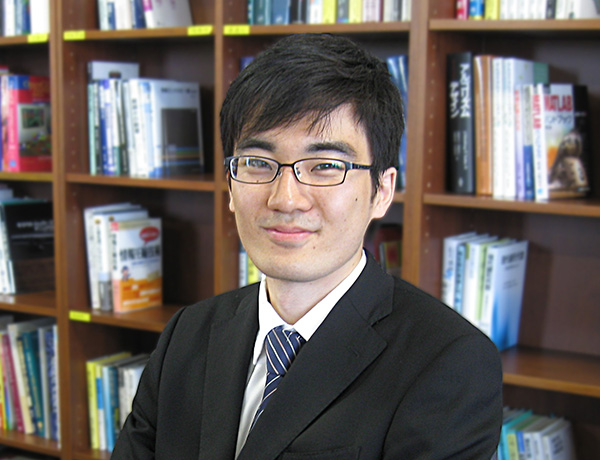
- Introduction
- I am a data scientist with expertise in robust statistical methods.
My strength lies in analyzing data containing outliers, which are not easy to deal with using normal methods.
- [Expertise]
-
- Machine Learning
- Statistical Analysis
- Natural Language Processing
- Topic Model
- Text Mining
- Structural Equation Modeling
- Marketing Research
- Portfolio Optimization
- High Frequency Trade Data Analysis
- Risk Measurement
- Maximum Loss Analysis
- Econometrics
- Causal Inference
- Pricing Strategies
- Social Engineering
- Operations Research
- Combinatorial Optimization
- Discrete Event Simulation
- Spatial Data Analysis
- Sensor Data Analysis
- Anomaly Detection
- [Skill]
-
- C/C++
- C#
- Python
- R
- [Degree]
- Doctor of Commerce (Osaka City University)
- [Research Fields and Results]
-
- Extracting nonlinear correlation structure from large scale timeseries
- Estimating and visualizing latent variables in spatial data
- Adaptive Kernel Density Estimation
- Customer Clustering using Latent Dirichlet Allocation
- [Papers]
-
- Knot selection in logspline density estimator for relative density estimation, Osaka City University, The Business Review, Vol.65, No.2, 2014.
- Spatial data mining using nonparametric relative risk estimation, OCU-GSB Working Paper, No. 201511, December 2015
- Development and application of various methods for improving the accuracy of pointwise mutual information estimation, Doctoral Dissertation (March 2015)
- Inoue Akimitsu, Density estimation based on pointwise mutual information., Economics Bulletin, 36(2), 2016.
- [Conference Presentations]
-
- Extension of Generalized Jackknife method approximating small sample properties of kernel density estimator, 2013 Joint Statistical Meeting, Osaka University, September 2013.
- Knot selection in logspline density estimator for relative density estimation, 8th Spring Meeting of the Japan Statistical Society, Doshisha University, March 2014.
- Multiple time scale volatility patterns before abrupt switching in financial markets (co-authored with Associate Professor Teruko Takada, Osaka City University), 5th International Conference of the ERCIM WG, COMPUTING & STATISTICS at Oviedo, Spain, December 2012.
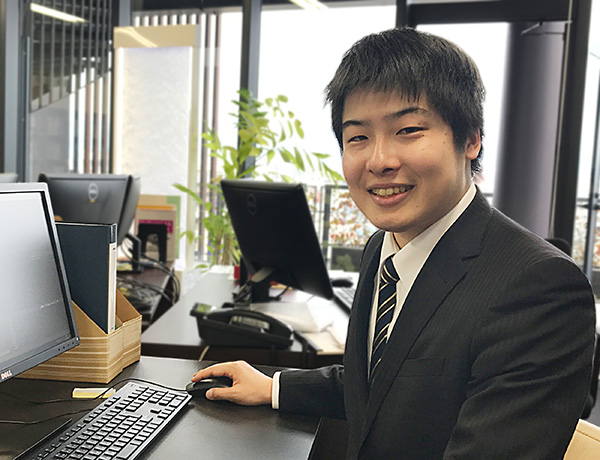
- Introduction
- I have studied plant systematics and evolution with a wide range of approaches not only field surveys but advanced data analyses such as next generation sequencing.
With this background, I am willing to support integrating computational techniques into your research.
- [Expertise]
-
- Evolutionary Biology
- Plant Systematics
- Bioinformatics
- [Skill]
-
- Java
- C++
- Python
- [Degree]
- Master of Science (Kyoto University)
- [Research Fields and Results]
-
- Systematic studies of monocotyledonous plants
- Phylogenetic analyses based on NGS (next generation sequencer) data
- Divergence time estimates (molecular dating) using comprehensive fossil data and DNA sequences
- [Papers]
-
- S. Eguchi and M. N. Tamura. 2016. Evolutionary timescale of monocots determined by the fossilized birth-death model using a large number of fossil records. Evolution 70(5): 1136-1144.
- [Conference Presentations]
-
- S. Eguchi, S. Fuse, M. N. Tamura. 2014. Phylogenetic analysis of some /Disporum /taxa (Colchicaceae) with special reference to their systematic status. Bristol-Kyoto Workshop on Plant Environmental Signalling. 2014-09, Bristol, UK.
- S. Eguchi and M. N. Tamura. Divergence time estimation of monocots using the fossilized birth-death model. The 14th Annual Meeting of the Japanese Society for Plant Systematics. Fukushima, Japan. 2015. (in Japanese)
- S. Eguchi, S. Fuse, A. Tezuka, A. Nagano, M. N. Tamura. 2016. RADseq data and divergence time estimation reveals the evolutionary history of Disporum (Colchicaceae). The 15th Annual Meeting of the Japanese Society for Plant Systematics. Toyama, Japan. 2016. (in Japanese)
- S. Eguchi, S. Fuse, A. Tezuka, A. Nagano, M. N. Tamura. 2016. Exploring the evolutionary history of plants using genome-wide data and divergence time estimates. Symposium: New Aspects of the Natural History of Plants Revealed by Technological Innovations. The 80th Annual Meeting of the Botanical Society of Japan. Okinawa, Japan. 2016. (in Japanese)
- S. Eguchi, S. Fuse, A. Tezuka, A. Nagano, M. N. Tamura. 2016. Genome-wide phylogeny revealed spatiotemporal evolution of /Disporum /(Liliales-Colchicaceae) in Japan. East Asian Plant Diversity and Conservation. Aug. 2016, Tokyo.
- S. Eguchi, Y. Ishiguro, S. Fuse, N. Fujii, M. N. Tamura. 2017. A new hybrid of Disporum (Colchicaceae) from Aso Region, Kumamoto Prefecture. The 16th Annual Meeting of the Japanese Society for Plant Systematics. Kyoto, Japan. 2017. (in Japanese)
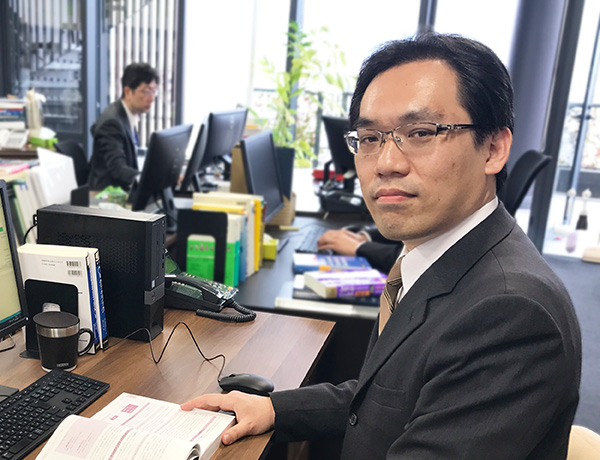
- Introduction
- I have a wide variety of research experiences in life science fields, such as the kinetic analysis of protein interaction and molecular biology of cells.
Taking advantage of my accumulated experimental knowledge, I would be happy to support your research through development of useful and helpful software which are totally customized for you.
- [Expertise]
-
- Molecular Biology
- Protein Engineering
- Kinetic Analysis
- [Skill]
-
- C#
- C++
- Java
- Python
- [Degree]
- Ph.D. (Agricultural Sciences, Kyoto University)
- [Research Fields and Results]
-
- Kinetic studies on thermal denaturation processes of proteins using least squares method.
- Study of interaction between enzyme and inhibitor via kinetic analysis of pre-steady-state in their binding process.
- X-ray crystallographic analysis to determine three-dimensional structure of proteins.
- Design of peptides to disperse carbon nanotubes into aqueous media using molecular mechanics calculation.
- Development of a method to deliver drugs into cells using carbon nanotubes as carrier.
- [Academic Affiliations]
-
- The Japan Society for Bioscience, Biotechnology, and Agrochemistry
- The Japanese Biochemical Society
- [Original Papers]
-
- Ohta T., Hashida Y., Higuchi Y., Yamashita F., and Hashida M. (2017) In Vitro Cellular Gene Delivery Employing a Novel Composite Material of Single-Walled Carbon Nanotubes Associated With Designed Peptides With Pegylation. J. Pharm. Sci. 106, 792-802.
- Ohta T., Hashida Y., Yamashita F., and Hashida M. (2016) Sustained Release of Mitomycin C from Its Conjugate with Single-Walled Carbon Nanotubes Associated by Pegylated Peptide. Biol. Pharm. Bull. 39, 1687-1693.
- Ohta T., Hashida Y., Yamashita F., and Hashida M. (2016) Development of Novel Drug and Gene Delivery Carriers Composed of Single-Walled Carbon Nanotubes and Designed Peptides With PEGylation. J. Pharm. Sci. 105, 2815-2824.
- Kusudo T., Hashida Y., Ando F., Shimokata H., and Yamashita H. (2015) Asp3Gly polymorphism affects fatty acid-binding protein 3 intracellular stability and subcellular localization. FEBS Lett. 589, 2382-2387.
- Zhou S., Hashida Y., Kawakami S., Mihara J., Umeyama T., Imahori H., Murakami T., Yamashita F., and Hashida M. (2014) Preparation of immunostimulatory single-walled carbon nanotube/CpG DNA complexes and evaluation of their potential in cancer immunotherapy. Int. J. Pharm. 471, 214-223.
- Hashida Y., Tanaka H., Zhou S., Kawakami S., Yamashita F., Murakami T., Umeyama T., Imahori H., and Hashida M. (2014) Photothermal ablation of tumor cells using a single-walled carbon nanotube-peptide composite. J. Control. Release. 173, 59-66.
- Menach E., Hashida Y., Yasukawa K., and Inouye K. (2013) Effects of conversion of the zinc-binding motif sequence of thermolysin, HEXXH, to that of dipeptidyl peptidase III, HEXXXH, on the activity and stability of thermolysin. Biosci. Biotechnol. Biochem. 77, 1901-1906.
- Hashida Y, Umeyama T, Mihara J, Imahori H, Tsujimoto M, Isoda S, Takano M, and Hashida M. (2012) Development of a novel composite material with carbon nanotubes assisted by self-assembled peptides designed in conjunction with β-sheet formation. J. Pharm. Sci. 101, 3398-3412.
- Sekiguchi S., Hashida Y., Yasukawa K., and Inouye K. (2012) Stabilization of bovine intestine alkaline phosphatase by sugars. Biosci. Biotechnol. Biochem. 76, 95-100.
- Sekiguchi S., Hashida Y., Yasukawa K., and Inouye K. (2011) Effects of amines and aminoalcohols on bovine intestine alkaline phosphatase activity. Enzyme Microb. Technol. 49, 171-176.
- Inouye K., Kusano M., Hashida Y., Minoda M, and Yasukawa K. (2007) Engineering, expression, purification, and production of recombinant thermolysin. Biotechnol. Annu. Rev. 13, 43-64.
- Tatsumi C., Hashida Y., Yasukawa K., and Inouye K. (2007) Effects of site-directed mutagenesis of the surface residues Gln128 and Gln225 of thermolysin on its catalytic activity. J. Biochem. 141, 835-842.
- Hashida Y. and Inouye K. (2007) Kinetic analysis of the activation-and-inhibition dual effects of cobalt ion on thermolysin activity. J. Biochem. 141, 843-853.
- Hashida Y. and Inouye K. (2007) Molecular mechanism of the inhibitory effect of cobalt ion on thermolysin activity and the suppressive effect of calcium ion on the cobalt ion-dependent inactivation of thermolysin. J. Biochem. 141, 879-888.
- Kusano M., Yasukawa K., Hashida Y., and Inouye K. (2006) Engineering of the pH-dependence of thermolysin activity as examined by site-directed mutagenesis of Asn112 located at the active site of thermolysin. J. Biochem. 139, 1017-1023.
- Inouye K., Minoda M., Takita T., Sakurama H., Hashida Y., Kusano M., and Yasukawa K.(2006) Extracellular production of recombinant thermolysin expressed in Escherichia coli, and its purification and enzymatic characterization. Protein Expr. Purif. 46, 248-255.
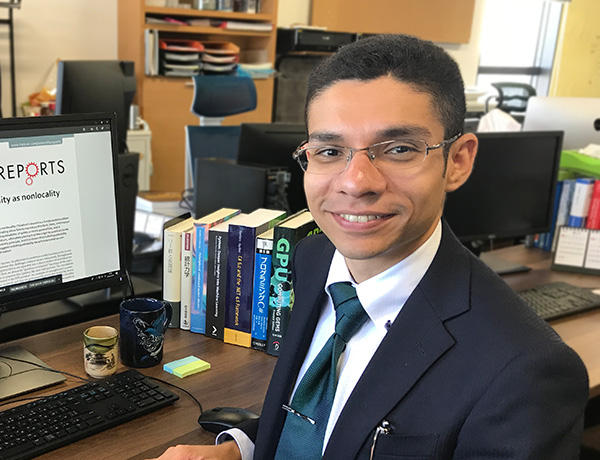
- Introduction
- I have specialized in quantum theory and quantum information science, conducting research in areas such as topological quantum information and the foundations of quantum theory. In addition to my research achievements in various fields such as physics, sociology, and engineering, I also hold an Applied Information Technology Engineer (AP) certification. Therefore, I can use my expertise and information technology skills to fulfill a variety of requests from clients.
In the future, I aim to leverage my specialized knowledge in quantum science and tackle the challenge of problem-solving across various domains using quantum computers.
- [Expertise]
-
- Quantum theory and quantum mechanics
- Quantum information
- Dynamics simulation
- [Skill]
-
- C/C++
- C#
- CUDA
- OpenCL
- Python
- Fortran
- Octave/MATLAB
- QISKIT
- D-Wave Ocean
- PHP
- [Degree and Qualification]
- Doctor in Engineering, Nagoya University
- Registered Information Security Specialist (RISS) No. 027178
- [Research and Business Results]
-
- Braiding dynamics simulation of non-Abelian quasi-particles (Majorana fermions)
- Theoretical proposal for quantum correlation mechanism
- Analysis of social culture variation with a culture diffusion model
- Automated crane control analysis
- Improvement and implementation of algorithm for tomography using quantum beams
- Implementation and performance enhancement of algorithm for X-ray diffraction analysis
- Theoretical analysis of quantum electrodynamic systems
- [Publications and International Conference Presentations]
-
- Cassio Sozinho Amorim, Kazuto Ebihara, Ai Yamakage, Yukio Tanaka, and Masatoshi Sato. Majorana braiding dynamics in nanowires. Physical Review B, 91(17):174305, 2015.
- Cassio Sozinho Amorim. Indistinguishability as nonlocality constraint. Scientific Reports, 8: 6091, 2018.
- Cassio Sozinho Amorim. Bourdieu dynamics of fields from a modified Axelrod model. arXiv:1407.3479 (pre-print)
- Cassio Sozinho Amorim, Kazuto Ebihara, Ai Yamakage, Yukio Tanaka, Masatoshi Sato. Numberical braiding of Majorana fermions on finite size nanowires. CIFAR Quantum Materials 2014. Montreal (Canada), May 2014.
- Cassio Sozinho Amorim, Ai Yamakage, Yukio Tanaka, Masatoshi Sato. Non-Abelian Dynamics in 1D systems. International Conference on Topological Quantum Phenomena 2014. Kyoto, December 2014.
- Cassio Sozinho Amorim, Ai Yamakage, Yukio Tanaka, Masatoshi Sato. Majorana fermion braiding dynamics in 1D systems. Topological Phases in Condensed Matter and Cold Atomic Systems. Hong Kong, December 2015.
- Cassio Sozinho Amorim. Indistinguishability as non-locality constraint. International Conference for Young Quantum Information Scientists 2016. Barcelona (Spain), October 2016.
- Cassio Sozinho Amorim. Indistinguishability as non-locality constraint. American Physical Society March Meeting 2017. New Orleans (USA), March, 2017.
- Cassio Sozinho Amorim. Indistinguishability as non-locality constraint. Trends in theory of correlated materials. Tsukuba, September, 2017.
- Cassio Sozinho Amorim. Indistinguishability and nonlocality. American Physical Society March Meeting 2018. Los Angeles(USA), March 2018.

- Introduction
- In the field of geoscience, I have developed numerical models of upper atmosphere, ocean and solid earth, and have analyzed simulation data. I would be happy to help you solve various problems related to simulation, such as model development for environments where experiments and observations are difficult, model parameter optimization, and analysis of complicated simulation data.
- [Expertise]
-
- Aeronomy
- Simulations of fluid, elastic body and cold plasma
- Frequency spectrum analysis
- [Skill]
-
- Fortran
- Python
- Java
- MPI
- MacOS/Linux/Windows
- [Degree]
- Ph. D. (science), Kyoto University
- [Participating Academic Societies]
-
- Society of Geomagnetism and Earth, Planetary and Space Sciences
- Japan Geoscience Union
- [Research Fields and Results]
- Simulations of Earth and space environment
- Ionospheric and thermospheric responses to solar flares
- Thermospheric density anomalies in response to polar ionospheric convection
- Ionospheric and thermospheric disturbances due to acoustic and gravity waves generated by an earthquake and tsunami
- Excitation of microbaroms and microseisms by ocean surface waves
- Ionospheric disturbances due to acoustic and gravity waves generated by rockets
- [Papers and Presentations]
-
- Matsumura, M., K. Shiokawa, Y. Otsuka, H. Shinagawa, H. Jin, Y. Miyoshi, H. Fujiwara, C. Tao, T. Tsugawa, A. Shinbori, K. Watanabe, S. Nishimoto, K. S. Lee, "GAIA simulations of the ionospheric response to X-class solar flares on September 6, 2017: the effect of background electron and neutral densities", The 3dr PSTEP International Symposium, May 2018.
- Lin, C. H., M. H. Shen, M. Y. Chou, C. H. Chen, J. Yue, P. C. Chen, and M. Matsumura, "Concentric traveling ionospheric disturbances triggered by the launch of a SpaceX Falcon 9 rocket", Geophys. Res. Lett., 44, 7578-7586, doi:10.1002/2017GL074192, 2017.
- Lin, C. H., C. H. Chen, M. Matsumura, J. T. Lin, Y. Kakinami, "Observation and simulation of the ionospheric waves triggered by rocket exhausts", J. Geophys. Res. Space Physics, 122, 8868-8882, doi:10.1002/2017JA023951, 2017.
- Matsumura, M., K. Shiokawa, H. Shinagawa, Y. Otsuka, H. Jin, Y. Miyoshi, and H. Fujiwara, "GAIA simulations of electric potential variations in the equatorial ionosphere after an intense solar flare", Japan Geoscience Union Meeting 2017, May 2017.
- Yoshikawa, K., K. Takaboshi, H. Nakata, T. Takano, M. Matsumura, H. Shinagawa, and I. Tomizawa, "Quantitative estimation of the ionospheric disturbances associated with earthquakes observed with HF doppler by a numerical simulation of neutral atmospheric waves", IEEJ Trans. FM, 136, 5, 259-264, doi:10.1541/ieejfms.136.259, 2016 (in Japanese).
- Matsumura, M., M. Kanao, "Numerical modeling of microbarometric and microseismic oscillations due to ocean surface waves", Japan Geoscience Union Meeting 2016, May 2016.
- Matsumura, M., M. Kanao, H. Shinagawa, and C. H. Chen, "Numerical simulation of waves across the solid earth, oceans, atmosphere, and ionosphere", the 2016 spring meeting of the Acoustical Society of Japan, March 2016.
- Matsumura, M. and M. Kanao, "Modeling of atmospheric wave radiation by oceanic waves", Chikyu Monthly, 37(10-11), 485-489, 2015 (in Japanese).
- Lin, C. H., J. T. Lin, C. H. Chen, J. Y. Liu, Y. Y. Sun, Y. Kakinami, M. Matsumura, W. H. Chen, H. Liu, and R. J. Rau, "Ionospheric shock waves triggered by rockets", Ann. Geophys., 32, 1145-1152, doi:10.5194/angeo-32-1145-2014, 2014.
- Matsumura, M., S. Taguchi, "Horizontal ion drag effect on the thermospheric mass density anomaly in the cusp", Asia Oceania Geosciences Society 11th Annual Meeting, July 2014.
- Shinagawa. H., T. Tsugawa, M. Matsumura, T. Iyemori, A. Saito, T. Maruyama, H. Jin, M. Nishioka, and Y. Otsuka, "Two-dimensional simulation of ionospheric variations in the vicinity of the epicenter of the Tohoku-oki earthquake on 11 March 2011", Geophys. Res. Lett., 40(19), 5009-5013, doi:10.1002/2013GL057627, 2013.
- Iyemori, T., Y. Tanaka, Y. Odagi, Y. Sano, M. Takeda, M. Nose, M. Utsugi, D. Rosales, E. Choque, J. Ishitsuka, S. Yamanaka, K. Nakanishi, M. Matsumura, and H. Shinagawa, "Barometric and magnetic observations of vertical acoustic resonance and resultant generation of field-aligned current associated with earthquakes", Earth Planets Space, 65(8), 901-909, doi:10.5047/eps.2013.02.002, 2013.
- Matsumura, M., T. Tsugawa, H. Shinagawa, A. Saito, Y. Otsuka, T. Iyemori, "Ionospheric disturbances induced by tsunami and tsunami source", Asia Oceania Geosciences Society 10th Anniversary Meeting, June 2013.
- Matsumura, M., H. Shinagawa, T. Iyemori, "Horizontal extension of acoustic resonance between the ground and the lower thermosphere", J. Atmos. Sol.-Terr. Phys., 75-76, 127-132, 2012.
- Matsumura, M., A. Saito, T. Iyemori, H. Shinagawa, T. Tsugawa, Y. Otsuka, M. Nishioka, C. H. Chen, "Numerical simulations of atmospheric waves excited by the 2011 off the Pacific coast of Tohoku Earthquake", Earth Planets Space, 63, 885-889, 2011.
- Saito, A., T. Tsugawa, Y. Otsuka, M. Nishioka, T. Iyemori, M. Matsumura, S. Saito, C. H. Chen, Y. Goi, and N. Choosakul, "Acoustic resonance and plasma depletion detected by GPS total electron content observation after the 2011 off the Pacific coast of Tohoku Earthquake", Earth Planets Space, 63, 863-867, 2011.
- Chen, C. H., A. Saito, C. H. Lin, J. Y. Liu, H. F. Tsai, T. Tsugawa, Y. Otsuka, M. Nishioka, and M. Matsumura, "Long-distance propagation of ionospheric disturbance generated by the 2011 Tohoku earthquake" , Earth Planets Space, 63, 881-884, 2011.
- Matsumura, M., H. Shinagawa, A. Saito, T. Tsugawa, Y. Otsuka, and T. Iyemori, "3-D simulations of ionospheric variations after the 2011 Tohoku earthquake", the 130th general assembly of the Society of Geomagnetism and Earth, Planetary and Space Sciences (SGEPSS), November 2011.

- Introduction
- My research consisted of conducting field investigation in urban rivers and application of Bayesian statistical analyses to unveil the underlying relations between fish distribution and geomorphological features. I can support your research with fine-tuned software, allowing efficient field investigations, as well as appropriate suggestions for handling diverse data. I would also like to develop software for maximizing aquatic organisms' habitat suitability, controlling for discharge and sediment supply.
- [Expertise]
-
- Stream ecology
- Theoretical ecology
- Bayesian statistics
- Generalized linear models
- [Skill]
-
- Fortran
- Java
- C++
- [Academic Background]
- Master of Agricultural Science (Kyoto University)
- [Papers]
-
- Yokota, K., Takemon, Y. and Fujihara, M. (2019) Spatial distribution of spawning redds and larvae of Rhinogobius flumineus in relation to hydrogeomorphological characteristics in Kamo River, Japan. Paddy and Water Environment. https://doi.org/10.1007/s10333-019-00743-0
- Yokota, K. and Fujihara, M. (2017) Numerical investigation of effects of species specific characteristics on community dynamics affected by stream drying in rivers with pool as refugia. Journal of Rainwater Catchment Systems, 23(1), 19--26.
- [Conference Presentations]
-
- Yokota, K., Fujihara, M. and Takemon, Y.: Relation between channel units and fish communities in the Kamo River in Kyoto. Proceedings of the 25th Annual Congress of Japan Rainwater Catchment Systems Association, 94--97, Matsuyama City, November 2017.
- Yokota, K., Fujihara, M., Takemon, Y. and Ikoma, A.: Spatial distribution of spawning redds and larvae of Rhinogobius flumineus in channels with drop structures. Proceedings of the 74th Annual Meeting of the Kyoto Branch of the Japanese Society of Irrigation, Drainage, and Rural Engineering, 196--197, Kanazawa City, October 2017.
- Yokota, K., Fujihara, M. and Takemon, Y.: Distribution of fish communities in channels with drop structures in the Kamo River. ELR2017 NAGOYA / 8th ICLEE Abstracts, 16, Nagoya City, September 2017.
- Yokota, K., Fujihara, M., Unami, K., Takeuchi, J., and Takemon, Y.: Longitudinal gradient and riverbed geomorphological characteristics in channels with drop structures. Proceedings of the 73rd Annual Meeting of the Kyoto Branch of the Japanese Society of Irrigation, Drainage, and Rural Engineering, 166--167, Osaka City, November 2016.
- Yokota, K., Fujihara, M., Takemon, Y., Nakagawa, H., and Mishina, T.: Relation between fish distribution patterns and habitat types in the Kamo River. Proceedings of the 24th Annual Congress of Japan Rainwater Catchment Systems Association, 108--111, Kyoto City, October 2016.
- Yokota, K., Fujihara, M., Unami, K., and Takeuchi, J.: Effects of drought on stream communities: A numerical investigation of the role of pools as refugia. Proceedings of the 72nd Annual Meeting of the Kyoto Branch of the Japanese Society of Irrigation, Drainage, and Rural Engineering, 120--121, Otsu City, November 2015.
- Yokota, K., Fujihara, M., Unami, K., and Takeuchi, J.: Impact of stream drying on stream communities: A parameter study on flow sensitivity and predation pressure. Proceedings of the 23rd Annual Congress of Japan Rainwater Catchment Systems Association, 123--126, Nagoya City, October-November 2015.

- Introduction
- I have applied various analysis and simulation methods in food engineering research to improve food quality. I would be grad to employ my research experience to suggest approaches for analyzing experimental data and also to support your software needs in R&D.
- [Expertise]
-
- Data Analysis and Simulation for Food Quality
- Kinetic Analysis
- Simulations
- [Skill]
-
- C#
- VB.NET
- [Degree]
- Ph. D. (Agricultural Sciences, Kyoto University)
- [Academic Affiliations]
-
- The Japanese Society for Food Science and Technology
- The Japan Society for Food Engineering
- [Research Fields]
-
- Food Science and Engineering
- Dispersion Science
- Oil Chemistry
- [Research Achievements]
-
- The Japan Society for Food Engineering Awards. Encouragement Award (2021)
- 11th Journal of Oleo Science Best Author Award (2020)
- 2018 year Japan Society for Food Engineering Essay Award (2018) (R. Chantanuson et al., (2018). Japan Journal of Food Engineering, 19, 191-196)
- [Books]
- [Review and Explanatory Papers]
-
- Y. Miyagawa (2021). Crystallization kinetics of low-melting point vegetable oils. Japan Journal of Food Engineering, 22, 22, 67-75.
- Y. Miyagawa, S. Adachi (2017). Dispersion and oxidative stability of O/W emulsions and oxidation of microencapsulated oil. Biosci. Biotechnol. Biochem., 81, 625-633.
- [Original Papers]
-
- Y. Miyagawa, H. Fujita, S. Adachi (2021). Kinetic analysis of thermal degradation of betanin at various pH values using deconvolution method. Food Chem. 130165.
- Y. Miyagawa, M. Yoshida, S. Adachi (2020). Crystallisation kinetics of rice bran and soybean oils during storage at low temperature. Food Bioprod. Process., 120, 123-130.
- Y. Miyagawa, S. Adachi (2020). Analysis of nonisothermal crystallization of rapeseed oil by deconvolution of differential scanning calorimetry curve. J. Oleo Sci. 68, 1215-1222.
- Y. Miyagawa, K. Kikuchi, M. Tsuchiya, S. Adachi (2019). A statistical model for activation of Factor C by binding to LPS aggregates. Eur. Biophys. J., 48, 743-747.
- Y. Chizawa, Y. Miyagawa, M. Yoshida, S. Adachi (2019). Effect of crystallization of oil phase on the destabilization of O/W emulsions containing vegetable oils with low melting points. Colloids Surf. A Physicochem. Eng. Asp., 582, 123824. (Y. Chizawa and Y. Miyagwa equally contributed)
- M. Yoshida, Y. Miyagawa, H. Fujita, S. Adachi (2019). Crystallization kinetics of safflower and olive oils during low-temperature storage. Grasas Aceites, 70, e331.
- Y. Miyagawa, T. Ogawa, S. Adachi (2018). An accelerated method for estimating the dispersion stability of mayonnaise by oil-water separation under reduced pressure. J. Am. Oil Chem. Soc., 95, 1367-1372.
- Y. Miyagawa, M. Yoshida, K. Nakagawa, S. Adachi (2018), Kinetic analysis of rapeseed oil crystallization during isothermal storage. Cryst. Growth Des. 18, 642-650.
- Y. Miyagawa, K. Kikuchi, S. Yamamoto, H. Shiga, H. Yoshii, S. Adachi (2017). A statistical model for estimating the effects of oil droplet size and oil fraction in microcapsules on oxidation of oil. Eur. J. Lipid Sci. Technol., 119, 1700225.
- Y. Miyagawa, K. Shintani, K. Katsuki, K. Nakagawa S. Adachi (2017). Thermal and structural changes of rapeseed oil during isothermal storage at low temperature. Food Struct., 11, 8-15.
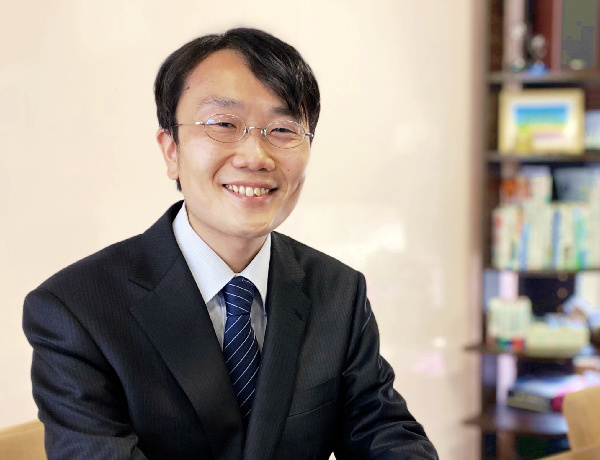
- Introduction
-
I have been studying accurate, stable and fast formulations of boundary element method, its related eigenvalue solver in conjunction with the Sakurai-Sugiura ( contour integral ) method, as well as topology and shape optimization problems.
I am thus fluent in numerical solvers and their application to structual optimizations in computational mechanics and computational electromagnetics. I hope to apply my knowledge and experience with numerical methods to support customers' research and developments.
- [Expertise]
-
- Computational Mechanics
- Computational Electromagnetics
- Structual Optimization
- [Skill]
-
- Fortran
- C#
- OpenMP
- MPI
- [Degree]
- Doctor of Informatics, Kyoto University.
- [Refereed Papers]
-
- T. Oka, R. Misawa and T. Yamada, Nesterov's acceleration for level set-based topology optimization using reaction-diffusion equations, Applied Mathematical Modelling, 120, pp.57-78, 2023.
- S. Lim, R. Misawa, K. Furuta, S. Maruyama, K. Izui and S. Nishiwaki, Weight reduction design of multi-material vehicle components using level set-based topology optimization, Structural and Multidisciplinary Optimization, 65(3), 2022.
- R. Misawa, Y. Takahashi, Z. Ma and N. Ohira, A parametric shape optimization using the Nyström-boundary integral equation method for complex eigenvalues of electromagnetic scattering problems in 2D, Transactions of JASCOME, 21, pp.71-79, 2021 (in Japanese)
- R. Misawa, On the calculation of complex eigenvalues of transmission problems for the 2D Helmholtz equation for concave scatterer using boundary integral equation method, Transactions of JASCOME, 20, pp.119-125, 2020 (in Japanese)
- R. Misawa and N. Nishimura, A boundary integral equation suitable for the Nyström method having the same complex eigenvalues as the Burton-Miller formulation for the Helmholtz equation in 2D, Transactions of JASCOME, 19, pp.61-66, 2019 (in Japanese)
- M. Fukuhara, R. Misawa, K. Niino and N. Nishimura, Stability of boundary element methods for the two dimensional wave equation in time domain revisited, Engineering Analysis with Boundary Elements, 108, pp.321-338 2019.
- R. Misawa, K. Niino and N. Nishimura, Boundary integral equations for calculating complex eigenvalues of transmission problems, SIAM Journal on Applied Mathematics, 77(2), pp.770-788, 2017.
- R. Misawa and N. Nishimura, A study on the single boundary integral equation method for transmission problems for Helmholtz' equation in 2D based on the distribution of fictitious complex eigenvalues, Transactions of JASCOME, 16, pp.73-78, 2016 (in Japanese)
- R. Misawa, K. Niino and N. Nishimura, An FMM for waveguide problems of 2-D Helmholtz' equation and its application to eigenvalue problems, Wave Motion, 63, pp.1-17, 2016.
- R. Misawa, N. Nishimura and M. S. Tong, Preconditioning of Periodic Fast Multipole Method for Solving Volume Integral Equations, IEEE Transactions on Antennas and Propagation, 62(9), pp.4799-4804, 2014.
- R. Misawa and N. Nishimura, Boundary integral formulations for one-periodic transmission problems for Helmholtz' equation in 2-D, Transactions of JASCOME, 12, pp.109-114, 2012 (in Japanese)
- [Books]
-
- New trends in computational electromagnetics (Role: Contributor, Chapter 12: Kazuki Niino, Ryota Misawa, Naoshi Nishimura, "New trends in periodic problems and determining related eigenvalues") SciTech Publishing, 2019 (ISBN: 9781785615481)
- [Explanatory Articles]
-
- S. Nishiwaki, R. Misawa, S. Lim, S. Maruyama, T. Yamada, K. Izui, High Performance and Light Weight of Automotive Body Structures based on Topology Optimization, Journal of Society of Automotive Engineers of Japan, 72(11) pp.80-86, Nov, 2018 (in Japanese)
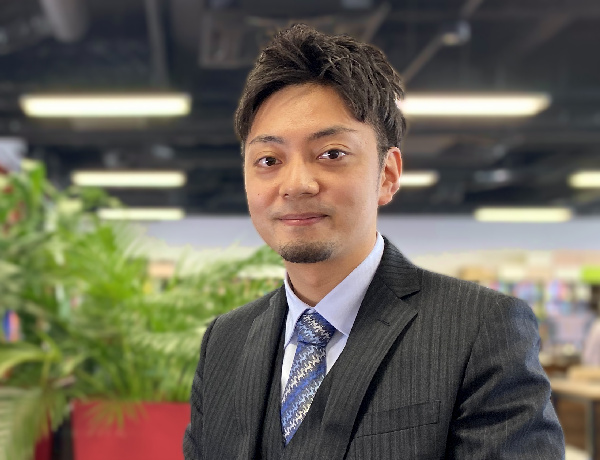
- Introduction
-
I have conducted decision-making and collective behavior research with non-model organisms such as termites and bean beetles.
I am glad to work with you solving various research issues with the analytical skills I developed in experimental research, such as development of experimental systems, image analysis and animal tracking technology.
- [Expertise]
-
- Image Analysis
- Machine Learning
- Behavioral Ecology
- Statistical Analysis
- [Skill]
-
- C#
- Python
- R
- [Academic Background]
- Kyoto University Graduate School of Agriculture, Postdoctoral Program Research advisor approved withdrawal
- [Research Fields]
-
- Behavioral Ecology
- Insect Ecology
- Self-organization
- Sociality
- [Papers and Japanese Commentary]
-
- Otake R. & Dobata S. (2018) Copy if dissatisfied, innovate if not: contrasting egg-laying decision making in an insect. Animal Cognition DOI:10.1007/s10071-018-1212-0
- Dobata S., Otake R. (2019) "Smell and Taste in Evolutionary Ecology: Oviposition Behavior of Bean Beetles" AROMA RESEARCH No.79
- [Major Conference Presentations]
-
- Otake R., Matsuura K. Termites in maze: emergence of the correct route through excitatory transmission among individuals (poster) SWARM2019, OIST November 2019 (Best Poster Award)
- Otake R., Dobata S. Copy or innovate: contrasting responses to chemical social information in bean beetles (oral) A joint meeting of the 56th Annual Conference of the Animal Behavior Society and the 36th International Ethological Conference, University of Illinois at Chicago July 2019
- Otake R., Matsuura K. Termite maze runner: transmission of excitement leads individuals to the correct route (poster) 41st Annual Meeting of the Japanese Society of Comparative Physiology and Biochemistry, Tokyo, November 2019, Best Article Award
- Otake R., Matsuura K. Maze solving termites: excitatory transmission among individuals elucidate the correct route (poster) 35th Annual Meeting of the Society of Population Ecology, Kyoto, September 2019, Poster Award
- Otake R., Dobata S. Copy or innovate: chemical recognition underlies contrasting responses to conspecific cues in bean beetles (oral) 66th Annual Meeting of the Ecological Society of Japan, Kobe, March 2019, Best English Oral Presentation Award
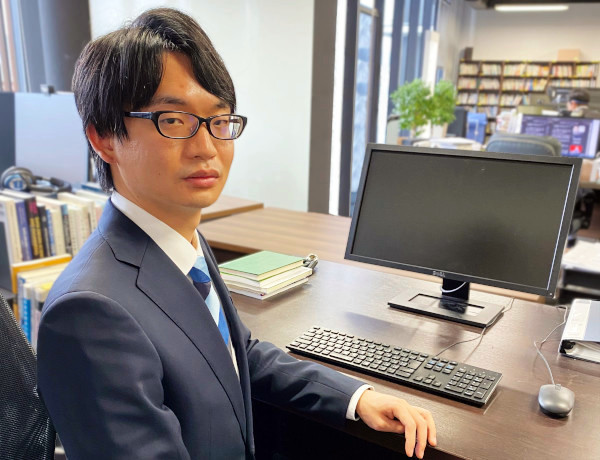
- Introduction
- I have conducted research in the fields of microbiology and molecular biology, such as metabolic modifications of microorganisms by genetic recombination and analysis of microbial ecosystems. I would be happy to apply my extensive experimental expertise to develop software and suggest analytical techniques appropriate to your research.
- [Expertise]
-
- Microbiology
- Molecular Biology
- Bioinformatics
- [Skill]
-
- C#
- Python
- [Degree]
- Master of Agriculture (Kyoto University)
- [Research Fields and Results]
-
- Metabolic modifications of microorganisms by genetic recombination
- Production of useful substances (lipid, ethanol, etc.) from marine macroalgae using microorganisms
- Analysis of marine microbiome
- Interaction analysis of bacteria and yeast
- [Papers]
-
- S. Nakata, M. Hio, R. Takase, S. Kawai, D. Watanabe, W. Hashimoto (2020). Polyunsaturated fatty acid-enriched lipid from reduced sugar alcohol mannitol by marine yeast Rhodosporidiobolus fluvialis Y2. Biochem. Biophys. Res. Commun. 526, 1138-1142.
- S. Nakata, K. Murata, W. Hashimoto, S. Kawai (2019). Uncovering the reactive nature of 4-deoxy-L-erythro-5-hexoseulose uronate for the utilization of alginate, a promising marine biopolymer. Sci. Rep. 9, 17147.
- [Major Conference Presentations]
-
- S. Nakata, M. Hio, R. Takase, S. Kawai, D. Watanabe, W. Hashimoto. Lipid production from mannitol, a major component of brown macroalgae, by marine-derived yeast. The 2020 Annual Meeting of The Japan Society for Bioscience, Biotechnology and Agrochemistry, March 2020.
- S. Kawai, S. Nakata, W. Hashimoto, K. Murata. Uncovering the crucial property of 4-deoxy-L-erythro-5-hexoseulose uronate for the utilization of alginate, a promising marine biomass. 29th International Conference on Yeast Genetics and Molecular Biology, August 2019.
- S. Nakata, F. Matsuoka, T. Kashihara, K. Murata, W. Hashimoto, S. Kawai. A monouronate (DEH) is produced by digestion of alginate by exo-type alginate lyase and reacts with amino group. The 2018 Annual Meeting of The Japan Society for Bioscience, Biotechnology and Agrochemistry, March 2018.
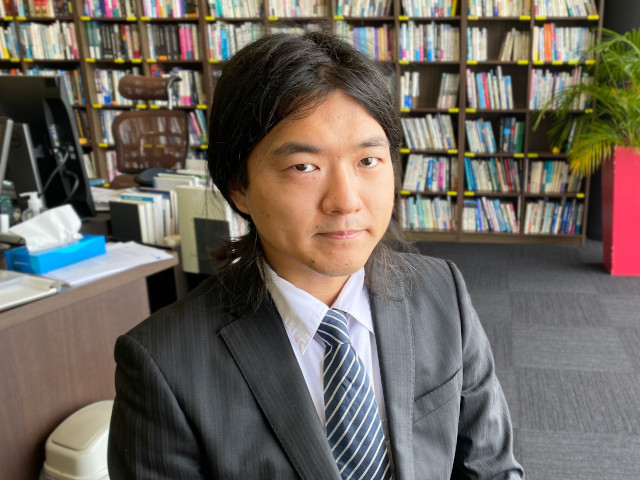
- Introduction
- I have conducted research on algebraic topological generalizations of the h-principle, a key technique in differential topology. While my primary expertise lies in algebraic topology, particularly in homology, I am also proficient in analytical methods and have explored areas such as symplectic and contact geometry. The strength of mathematics lies in its high universality, leading to technological innovations through its applications in unexpected fields. I offer the best mathematical approaches for research and development situations where breakthroughs in technical difficulties or new discoveries are required.
- [Specialty]
-
- Topology
- Geometry
- Algebraic Topology
- Category Theory
- [Skill]
-
- C#
- Python
- [Degree]
- Doctor of Science, Tokyo Institute of Technology.
- [Research Fields]
-
- Knot Theory
- 4-Dimensional Topology
- Applications of Algebraic Topology methods to Differential Topology
- Engel Manifolds
- Homotopy Principle (h-principle)
- Oka Theory
- [Papers]
-
- Koji Yamazaki. Sheaf theoretic characterization of topological etale groupoids. Topology and its Applications, Volume 312, 1 May 2022, 108091.
- Koji Yamazaki. Engel manifolds and contact 3-orbifolds. arXiv preprint 1811.09076, 2018.
- Koji Yamazaki. Developing Maps and Engel Automorphisms. arXiv preprint 1903.02362, 2019.
- Koji Yamazaki. Fibration structure for Gromov h-principle. arXiv preprint abs/2102.03449.
- Koji Yamazaki. Condensed Sets on Compact Hausdorff Spaces. arXiv preprint abs/2211.13855.
- [Conference]
-
- Koji Yamazaki. Automorphisms of Engel Manifolds. Contact Structures, Singularities, Differential Equations and their Surroundings, online 2021.
- Koji Yamazaki. Fibration structure for Gromov h-principle. Differential Topology Seminar, Kyoto University 2021.
- Koji Yamazaki. Categorical structure for h-principle. Topology Seminar, Osaka University 2023.
Contact Us
If you have any inquiry
about our company, please contact us.
(Phone hours: 10:00 - 17:00, Japan Standard Time)
+81-75-321-7300
